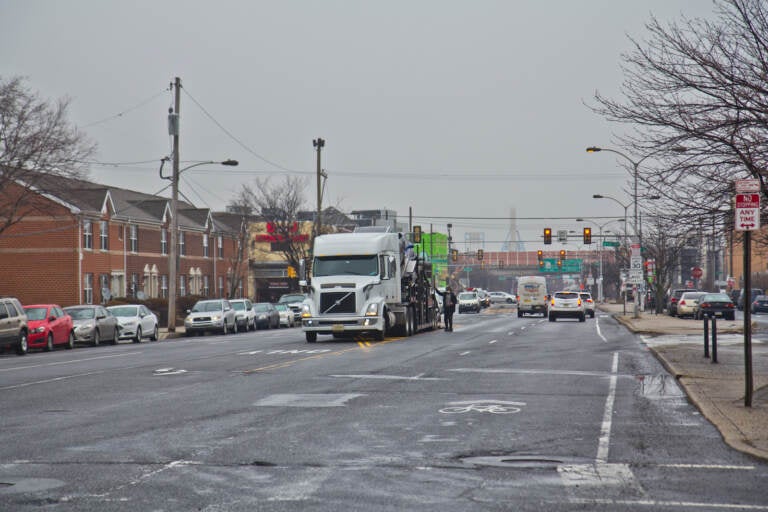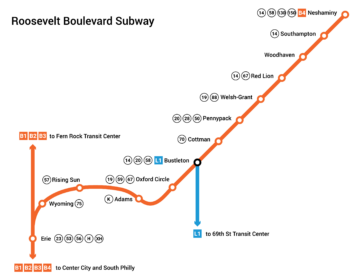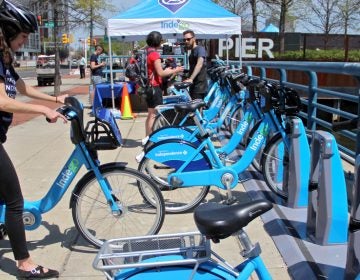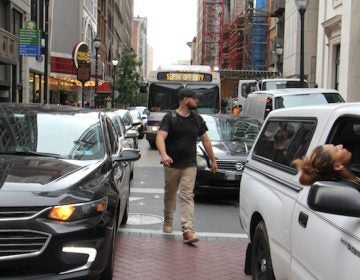Washington Avenue paving to begin Monday, after years of delays
The project follows a contentious fight over slimming down Washington Avenue to make it safer for pedestrians. It’s expected to wrap up by the end of 2022, weather permitting.

Washington Avenue in South Philadelphia. (Kimberly Paynter/WHYY)
A long-delayed street resurfacing project is finally underway in Philadelphia.
The Washington Avenue paving will take place from Fourth Street to Grays Ferry Avenue, but only in the area from 4th to 11th street will lane be restricted to make the area safer for pedestrians, said Mike Carroll, deputy managing director for Philadelphia’s Office of Transportation.
“We will proceed between Fourth and 11th Street with the block between 11th and 12th as sort of a transition area … narrowing the cross section up to create shorter crossing distances to create a protected bike facility,” Carroll said.
Discussion of the changes went on for 67 public meetings and was followed by opposition in City Council that blocked the so-called “lane diet” on the portion of Washington Avenue between Broad Street and Grays Ferry.
Carroll admits he’s disappointed their plan didn’t run the entire length of the project.
“It’s going to be in some ways less of an inviting pedestrian environment, I think that’s clear,” he said. ”Even people who were opposing the changes were acknowledging that the changes would make it a friendlier, more pedestrian oriented environment.”
“People who cross Washington Avenue aren’t going to have the same level of comfort west of Broad Street that they are going to have east of Broad Street,” Carroll added. “We’ll see how that plays out.”
The west side of Broad Street will remain at five lanes, creating some chaotic conditions in the mixed-use residential and business corridor. Carroll hopes that once the project is done, people on the west side of Broad Street might reconsider paring down the lanes to make the street safer.
Ubiquitous supply chain issues are causing problems with some of the traffic light changes, which include signal timing and giving signal priority to buses and emergency vehicles when necessary.
Carroll said this is one of the projects that will be used as a demonstration for how safety can be implemented without impacting the surrounding neighborhoods.
“It’s a tool in the toolbox but it’s one we think can make a dramatic difference in those who die or are seriously injured and that is our goal here,” he said.
Carroll added that red light enforcement cameras could be in the future for the area as part of the safety upgrades.
The paving project will be broken down into four parts: milling, adjusting manhole covers and resetting utility boxes, then paving and lane striping.
Carroll said he believes drivers will have to slow down between the milling and paving process because it will be hard to navigate around the manhole covers and inlets.
The milling will be done during evening hours. Then, when the new asphalt is laid, crews will place temporary striping until the permanent lanes are marked off. The work on adjusting manhole covers and utility boxes will be done during the day, which could create some headaches for drivers in the South Philadelphia area.
The project should be completed by the end of the year, weather permitting.
WHYY is your source for fact-based, in-depth journalism and information. As a nonprofit organization, we rely on financial support from readers like you. Please give today.








